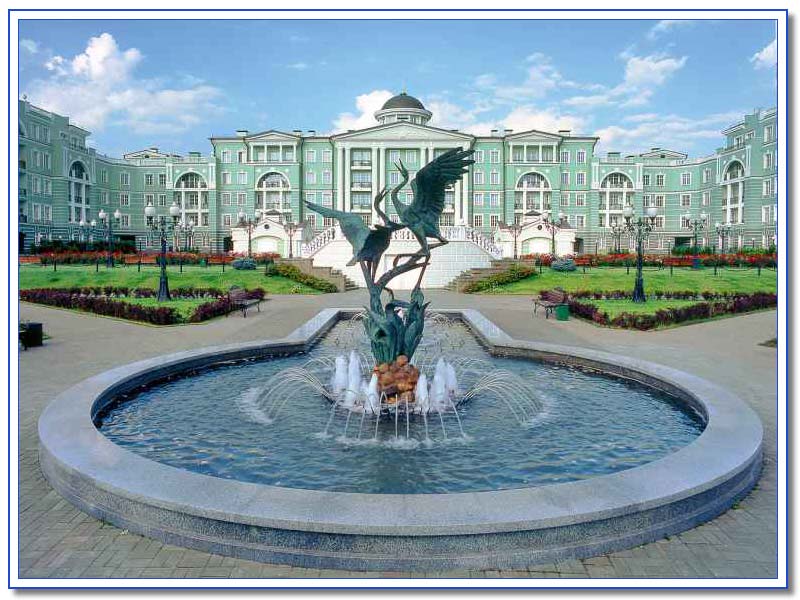Intelligent systems.
Author: L.N. Makeev, Leading Specialist of the Automation and Dispatch Department of JSC NPO SEM
Department of Automation and Dispatch of OJSC «NPO SEM» (DAD) Another major project was completed to create an automated monitoring and control system for engineering equipment of the Pokrovskoye — Glebovo residential complex in Moscow.
The facility is an elite microdistrict consisting of 9 residential five-story buildings with underground parking lots and 29 cottages. According to the stages of development and territorial location, construction was carried out in two stages: first, buildings were erected in zone «C» — 4 five-story buildings and 12 cottages, and then in zone «B» — 5 five-story buildings and 17 cottages. 041;.
The main task set by the customer to the DAD specialists was to create the most reliable control and monitoring system, allowing the most efficient operation of the building complex. It was necessary to provide the dispatcher with information about the operation of all engineering systems installed in each building and cottage — supply and exhaust ventilation, central air conditioning system, small individual heating unit, power supply and electric lighting system, etc., and also to organize an automated accounting system for energy resources of the entire complex, necessary for mutual settlements with residents.
Taking into account some complexity of solving the task associated with a significant amount of engineering equipment that is subject to monitoring and management of all its parameters, its large territorial diversity, DAD specialists made a decision at the design stage to implement automation of engineering systems on the equipment of one manufacturer and use a software package for upper and lower level systems from the same manufacturer.
To ensure, if necessary, integration with other engineering systems, the open LonWorks information exchange protocol has been adopted.
This solution made it possible to avoid possible inconsistencies between equipment from different manufacturers, minimize the time required to set up the system, and also obtain the most reliable and functionally complete automation and dispatch system. After analyzing all possible technical solutions offered by manufacturers, DAD specialists settled on equipment and software from TAC (Sweden) as the most suitable.
However, the use of this equipment to create a system for monitoring and accounting of energy resources turned out to be expensive and ineffective. As a result, the ECOM software and hardware complex was chosen as the one that best suits the goals and scope of the task.
The first successful completion was the launch of the described system in the first stage of development of zone “C”. The result was a complete, reliably functioning system, which left the customer’s technical services no reason to doubt the correctness of the solutions chosen by the DAD specialists.
When designing the system in zone “B”, it was decided to install another server for the automation and dispatch system of engineering systems in one of the buildings located in this zone of the territorial development of the complex. This was caused by the need to implement a high-speed data transmission segment between two zones “B” and “C” located at a great distance from each other. All cable lines of the LonWorks network of buildings in zone “B”, similar to zone “C”, are assembled in a room with an installed intermediate server, to routers that make the transition from the LonWorks segment with the FTT-10 network topology (78kBit/s) per TP segment—1250 (1250kBit/s). The high-speed segment serves as a medium for transmitting data to the zone “B” server. Communication between buildings (servers) zones “B” and “C” are carried out via an Ethernet 100Mbit network. The “B” zone computer can also be used by the operations services as a workstation, allowing them to monitor and manage the operation of the “B” zone engineering systems in their immediate vicinity.
For the energy resource monitoring and accounting system, no intermediate server was installed, since there was no need to transfer data at high speeds, and one workstation in zone “C”, allowing settlements with consumers, was completely sufficient.
As a result, the created automated system currently provides the dispatcher with information from 1,700 water, heat and electricity meters, as well as management and control over the entire set of engineering equipment of the residential complex, and this is:
— 96 air handling units and air conditioners;
— 547 exhaust units;
— 28 heating points;
— 6 refrigeration machines;
— 5 pumping stations;
— 89 groups of external and internal lighting;
— 1 gas boiler house, etc.
It is difficult to imagine how and with what forces, without the use of this system, the maintenance service would cope with so many engineering systems located at long distances from each other.
JSC «NPO SEM»
Russia, 109316, Moscow,
Ostapovsky proezd, 22
